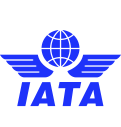 Safety is our #1 priority!
Safety is our #1 priority!
Safety is the highest priority of all involved in aviation. The shared goal is for every flight to take-off and land safely, as happens more than 126,000 times every day. In 2018, the fatal accident rate was 0.28 per 1 million flights, the equivalent of one fatal accident for every 4.2 million flights.
Each fatality is a tragedy. And that rededicates everyone in the aviation industry to our common goal of having every flight take-off and land safely. Our Safety Strategy aims to help the industry become even safer.
Frequently Asked Questions
Is flying safer than taking a train or bus?
Flying is the safest form of long-distance transport the world has ever known. In 2018, some 4.3 billion passengers flew safely on over 46 million flights. The fatal accident rate was 0.28 per million flights, the equivalent of one fatal accident for every 4.2 million flights.
Yet we still have accidents, so we know there is room for improvement. Each fatality is a tragedy. And that rededicates everyone in the aviation industry to our common goal of having every flight take-off and land safely.
What is the industry doing to improve safety?
We support aviation safety through a number of programs and initiatives, including the IATA Operational Safety Audit.
Another safety focus is reducing injuries from inflight turbulence by developing a global platform for sharing automated turbulence reports that airlines can access to help pilots avoid areas of turbulence.
Is turbulence dangerous?
Turbulence is when the aircraft encounters a pocket of air that can feel choppy but is perfectly normal. Aircraft are built to withstand a lot of air pushing against them and this is not dangerous to the aircraft. However, you should keep your seatbelt fastened whenever you are seated, to avoid injury, in case turbulence is encountered without warning.
To help reduce the risk of turbulence-related injuries, IATA has launched Turbulence Aware, a global platform for sharing automated turbulence reports in real time. Operational trials with a number of airlines are being conducted this year, with full launch planned for 2020.
DID YOU KNOW?
Aviation is the safest form of long distance transport. In 2018, the all accident rate (measured in accidents per 1 million flights) was 1.35, which was the equivalent of one accident for every 740,000 flights. This was an improvement over the all accident rate of 1.79 for the previous 5-year period (2013-2017),
Concretely, the 2018 fatality risk of 0.17 means that on average, a person would have to travel by air every day for 16,581 years to experience a 100% fatal accident.







